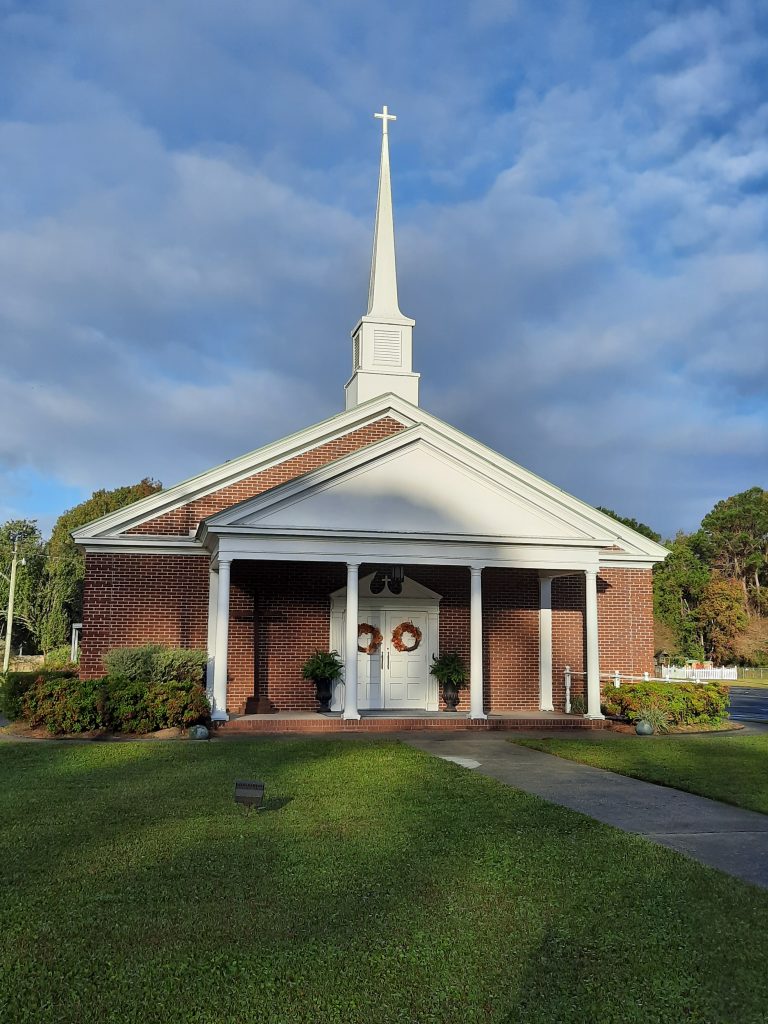
On Sunday mornings, at 9:45am, a congregation assembles in the sanctuary [‘holy place’] of Charleston Presbyterian Church (located at 1405 Miles Drive). Maybe the term “sanctuary” merely gets used as a conventional way of identifying the space in which our worship service unfolds. Or maybe the term actually points to a deeper reality . . . The New Testament frequently refers to the Church as the Temple of the living God. The layout and furnishings of the Temple were copied from the Tabernacle (Exodus 40); and the New Testament letter known as Hebrews depicts the Christian experience of God in terms of a priest journeying into the Tabernacle!
Allow me to explore this priest-in-tabernacle imagery in more depth . . . The elements of our traditional liturgy display remarkable analogies to the furnishings and rituals of the Tabernacle! Let me note down some of these correspondences for you . . .
1) The opening of the Tabernacle faced East. In Genesis 3, human rebellion against God led to our expulsion from Eden—in an eastward direction! Symbolically, then, our Call to Worship summons us back to ‘Eden’—and the Tabernacle’s décor was a reminder of the Garden of Eden. 2) Once inside the Tabernacle, the worshipper encountered a bronze altar for sacrifice. They placed their hand on the head of the sacrificial animal, to identify with its death. This action corresponds to our Confession of Sin. 3) This is followed by the Assurance of Pardon—which matches the next furnishing of the Tabernacle, namely, the bronze basin filled with purifying water. 4) The gold lampstand naturally reminds us of the Scripture Lessons and Sermon—since God’s Word is “a lamp to our feet, a light to our path” (Psalm 119:105). 5) The gold table, featuring the “bread of the presence,” naturally reminds us of the Lord’s Supper. 6) The next piece of furniture was a golden altar, for burning incense. Revelation 5:8 associates incense with “the prayers of the saints.” In the Tabernacle, the burning incense created a cloud of smoke—a reminder of the glory of God, present at the exodus as a glorious pillar of cloud and fire. So the incense (burnt on the golden altar) resembles the Gloria Patri and the Doxology. 7) Finally, only the high priest got to approach the Ark of the Covenant. There he encountered God (Exodus 25:22). But when he exited the Tabernacle, he channeled this encounter to the people, via words that pastors today often pronounce in their Benedictions (Numbers 6:23-27).
Scientists use the phrase ‘space-time continuum’ to imply that time and space are two dimensions of one reality. The sacred rituals of our liturgy unfold in time—and actually create a sacred space or sanctuary, in which the presence of the living God may be felt in a special way. If you are able to attend worship services with us, I hope and pray that you may experience the presence of God through each of the elements of our liturgy.
– Pastor Adrian Smith’s Message (Christian Pioneer Newsletter – February 21st, 2025)
Subscribe to our newsletter to learn more about the Word of God and community-focused events at Charleston Presbyterian Church!
Want to know what’s happening at Charleston Presbyterian Church? Sign up to receive our weekly newsletter, The Pioneer.
By submitting this form, you are consenting to receive emails from: Charleston Presbyterian Church.
